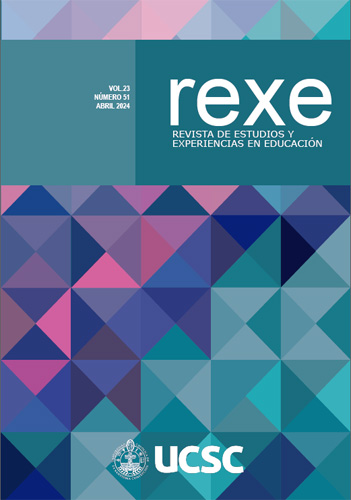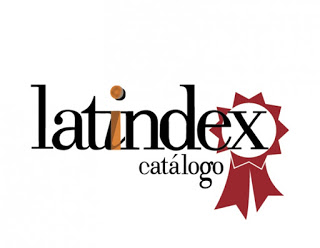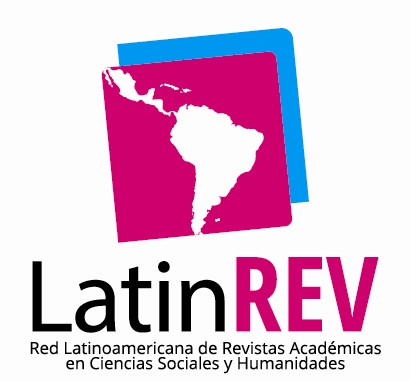Implantación del Aula Invertida en las Prácticas de Laboratorio de una Asignatura Básica de Química
DOI:
https://doi.org/10.21703/rexe.v23i51.2070Palabras clave:
Aprendizaje activo, Aula Invertida, Química Básica, MotivaciónResumen
El objetivo de este trabajo es la implantación del modelo pedagógico aula invertida en las prácticas de laboratorio de una asignatura básica de química de primer curso del Grado en Ciencias del Mar de la Universidad de Las Palmas de Gran Canaria. La estrategia utilizada consistió en asignar al estudiante la preparación previa de las prácticas como trabajo autónomo, a través de una guía con los fundamentos teóricos y el procedimiento experimental, y una colección de vídeos con las técnicas instrumentales. Antes y después de la realización de los experimentos, el alumno resuelve cuestionarios online para la evaluación de su aprendizaje, y una encuesta de satisfacción y opinión sobre distintos aspectos de la estrategia utilizada. En relación con los resultados, las calificaciones obtenidas mostraron que el 5,1% de los participantes alcanzó la excelencia (con una calificación mayor o igual que 9 sobre 10 puntos) y el 39,7% alcanzó la calificación notable. De acuerdo con los resultados de la encuesta de satisfacción, los estudiantes indicaron estar muy satisfechos “con las prácticas de laboratorio de la asignatura Fundamentos de Química” y “con lo aprendido en esas sesiones prácticas” otorgando las puntuaciones medias de 4,56 y 4,45 respectivamente en una escala Likert de 5 puntos (5 = Muy satisfecho a 1= Muy insatisfecho). El 93,1% de los participantes declaró que la estrategia docente aplicada le había resultado útil o muy útil, el 64,4% que le aportaba “más autonomía en el laboratorio” y el 75% que le aportaba un aprendizaje más efectivo. Los resultados de la experiencia revelan que el aula invertida fomenta la autonomía y confianza del estudiante en el laboratorio, así como su motivación. Parece el modelo adecuado para la enseñanza de la química experimental a grupos pequeños. Sin embargo, una limitación fue la baja implicación en algunas actividades como el visionado de vídeos.
Descargas
Referencias
Abeysekera, L. y Dawson, P. (2015). Motivation and cognitive load in the flipped classroom: definition, rationale and a call for research. Higher Education Research and Development, 34, 1–14. https://doi.org/10.1080/07294360.2014.934336
Alemán, B., Navarro, O. L., Suárez, R. M., Izquierdo, Y. y Encinas, T. C. (2018). La motivación en el contexto del proceso enseñanza-aprendizaje en carreras de las Ciencias Médicas. Revista Médica Electrónica, 40(4), 1257-1270. http://scielo.sld.cu/scielo.php?script=sci_arttext&pid=S1684-18242018000400032&lng=es&tlng=es
Arnold-Garza, S. (2014). The Flipped Classroom Teaching Model and Its Use for Information Literacy Instruction. Communications in Information Literacy, 8, 7–22. https://doi.org/10.15760/ comminfolit.2014.8.1.161
Bhattacharyya, G. y Bodner, G. M. (2005). “It Gets Me to the Product”: How Students Propose Organic Mechanisms. Journal Chemical Education, 82, 1402–1407. https://doi.org/10.1021/ed082p1402
Bergmann, J. y Sams, A. (2014). Flipped learning. Gateway to student engagement. International Society for Technology in Education. ISBN: 978-1-56484-344-9
Birundha, S. (2020). Effectiveness of Flipped Classroom in Teaching Organic Chemistry at Standard XI. Shanlax International Journal of Education, 9(1), 198–204. https://doi.org/10.34293/ education.v9i1.3567
Campillo-Ferrer, J.M. y Miralles-Martínez, P. (2021). Effectiveness of the flipped classroom model on students’ self-reported motivation and learning during the COVID-19 pandemic. Humanities and Social Sciences Communications, 8, 176. https://doi.org/10.1057/s41599-021-00860-4
Cardellini, L. (2012). Chemistry: Why the Subject is Difficult? Educación Química, 23(2), 305-310. https://doi.org/10.1016/S0187-893X(17)30158-1
Cooper, M. y Stowe, R. (2018). Chemistry education research—from personal empiricism to evidence, theory, and informed practice. Chem. Rev. 118(12), 6053–608. https://doi.org/10.1021/acs.chemrev.8b00020
Cormier, C., y Voisard, B. (2018). Flipped Classroom in Organic Chemistry Has Significant Effect on Students’ Grades. Frontiers in ICT 4, 30. https://doi.org/10.3389/fict.2017.00030
Fautch, J. M. (2015). The flipped classroom for teaching organic chemistry in small classes: is it effective? Chemistry Education Research Practice 16, 179–186. https://doi.org/10.1039/C4RP00230J
Flores, J., Caballero, S., Concesa, M. y Moreira, M. A. (2009). El laboratorio en la enseñanza de las ciencias: Una visión integral en este complejo ambiente de aprendizaje. Revista de Investigación, 33(68), 75–111. http://ve.scielo.org/scielo.php?script=sci_arttext&pid=S1010-29142009000300005&lng=es&tlng=esF
Flynn, A. B. (2015). Structure and evaluation of flipped chemistry courses: organic & spectroscopy, large and small, first to third year, English and French. Chemistry Education Research and Practice, 16, 198–211. https://doi.org/10.1039/C4RP00224E
Galindo-Dominguez, H. (2021). Flipped Classroom in the Educational System: Trend or Effective Pedagogical Model Compared to Other Methodologies? Educational Technology & Society, 24(3), 44–60. https://www.jstor.org/stable/27032855
Gutiérrez-Mosquera, A. y Barajas-Perea, D. S. (2022). Uso de productos cotidianos en las prácticas de laboratorio de química orgánica: una estrategia metodológica basada en la investigación dirigida. Revista Científica, 44(2), 189–201. https://doi.org/10.14483/23448350.18616.
Hicks R. W. y Bevsek H. M. (2012). Utilizing Problem-Based Learning in Qualitative Analysis Lab Experiments. Journal of Chemical Education, 89(2), 254–257. https://doi.org/10.1021/ed1001202
Houseknecht J. B., Leontyev A., Maloney V. y Welder, C. (2019). Introduction to Active Learning in Organic Chemistry and Essential Terms. ACS Symposium Series, 1336(1), 1–17. https://doi.org/10.1021/bk-2019-1336.ch001.
Jia, C., Hew, K. F., Bai, S. y Huang, W. (2020) Adaptation of a conventional flipped course to an online flipped format during the Covid-19 pandemic: student learning performance and engagement. Journal of Research on Technology in Education, 54(2), 281–301. https://doi.org/10.1080/15391523.2020.1847220
Jiménez-Valverde, G., Llobera-Jiménez, R. y Llitjós-Viza, A. (2006). La atención a la diversidad en las prácticas de laboratorio de química: los niveles de abertura. Enseñanza de las Ciencias, 24(1), 59–70. https://doi.org/10.5565/rev/ensciencias.3814
Lafarge, D. L., Morge, L. M. y Meheut, ́M. M. (2014). A New Higher Education Curriculum in Organic Chemistry: What Questions Should Be Asked? Journal of Chemical Education, 91(2), 173–178. https://doi.org/10.1021/ed300746e
Lage, M. J., Platt, G. J. y Treglia, M. (2000). Inverting the classroom: A gateway to creating an inclusive learning environment. The Journal of Economic Education 31, 30–43. https://doi.org/10.1080/00220480009596759
Lynn, A. B. (2015). Structure and evaluation of flipped chemistry courses: organic & spectroscopy, large and small, first to third year, English and French. Chemistry Education Research and Practice, 16, 198–211. https://doi.org/10.1039/C4RP00224Eice
Nouri, J. (2016). The flipped classroom: for active, effective and increased learning – especially for low achievers. International Journal of Educational Technology in Higher Education, 13, 33. https://doi.org/10.1186/s41239-016-0032-z
Robinson, F. J., Reeves, P. M., Caines, H. L. y De Grandi, C. (2020). Using Open-Source Videos to Flip a First-Year College Physics Class. Journal of Science and EducationTechnology, 29, 283–293. https://doi.org/10.1007/s10956-020-09814-y
Ryan, M. D. y Reid, S. (2016). Impact of the flipped classroom on student performance and retention: a parallel controlled study in general chemistry. Journal of Chemical Education, 93(1), 13–23. https://doi.org/10.1021/acs.jchemed.5b00717
Sergis, S., Sampson, D. G., y Pelliccione, L. (2017). Investigating the impact of Flipped Classroom on students’ learning experiences: A Self-Determination Theory approach. Computers in Human Behavior, 78, 368–378. http://hdl.handle.net/20.500.11937/56739
Smith, J. D. (2013). Student attitudes toward flipping the general chemistry classroom. Chemistry Education Research and Practice, 14, 607–614. https://doi.org/10.1039/C3RP00083D
Srinivasan, S., Gibbons, R. E., Murphy, K. L. y Raker, J. (2018). Flipped classroom use in chemistry education: results from a survey of postsecondary faculty members. Chemistry Education Research and Practice, 19(4), 1307–1318. http://dx.doi.org/10.1039/C8RP00094H
Talanquer, V. (2018). Importance of Understanding Fundamental Chemical Mechanisms. Journal of Chemical Education, 95(11), 1905–1911. https://doi.org/10.1021/acs.jchemed.8b00508
Descargas
Publicado
Número
Sección
Licencia
Derechos de autor 2023 Milagros Rico-Santos, María del Pino Quintana-Montesdeoca

Esta obra está bajo una licencia internacional Creative Commons Atribución 4.0.
Política de acceso abierto
Esta revista proporciona un acceso abierto inmediato a su contenido, basado en el principio de que ofrecer al público un acceso libre a las investigaciones ayuda a un mayor intercambio global de conocimiento.
Licencia
Revista REXE "Revista de Estudios y Experiencias en Educación" de la Facultad de Educación, Universidad Católica de la Santísima Concepción, está distribuido bajo una Licencia Creative Commons Atribución 4.0 Internacional.






